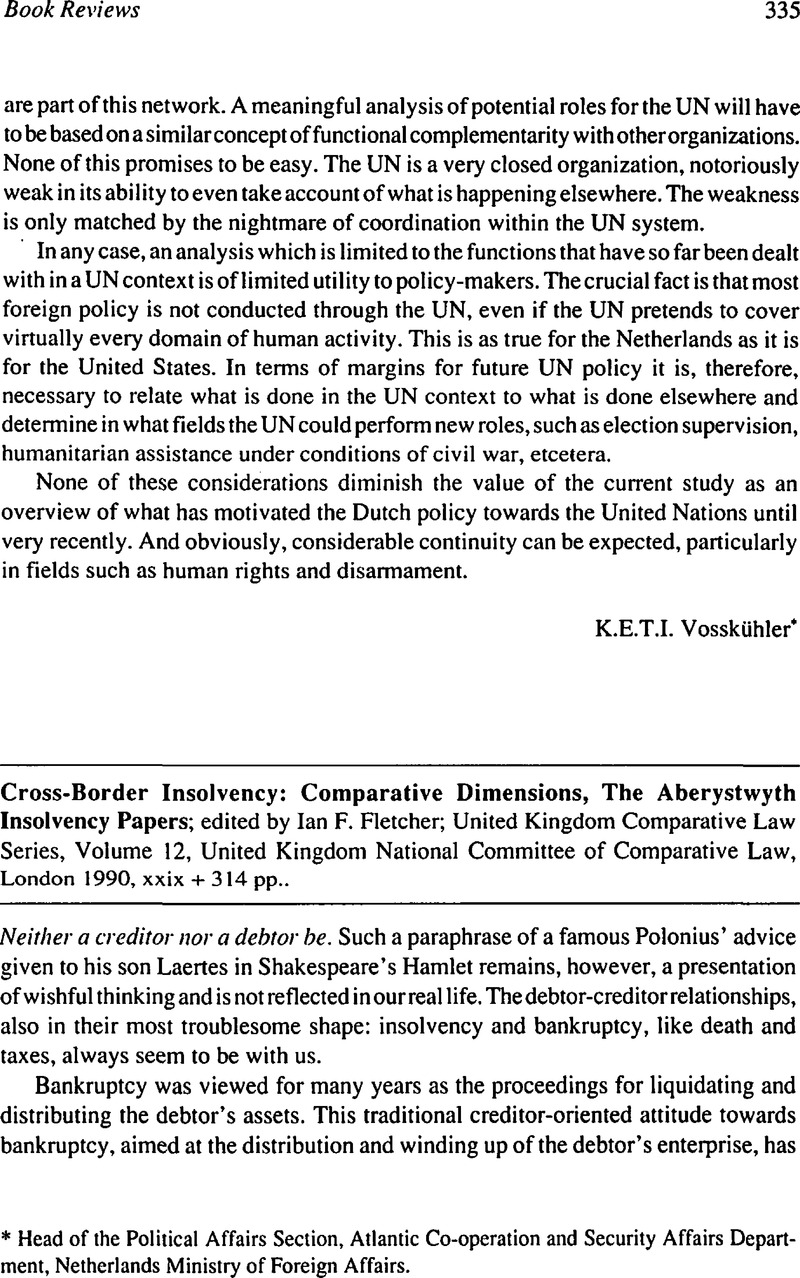Published online by Cambridge University Press: 21 July 2009

1. The best example thereof is the regulation of the United States Bankruptcy Code of Oct. 1,1979. Cf., Allan, D.E., Drobnig, U., Secured Credit in Commercial Insolvencies-a Comparative Analysis, 44 Rabels Zeitschrift 620–621(1980).Google Scholar
2. Fletcher defines ‘cross-border insolvency’ in his introduction to the book under review as the cases of “insolvency where assets and/or liabilities of the debtor are located in two or more separate jurisdictions, or where the personal circumstances of the debtor are such to render him or it simultaneously subject to the insolvency laws of more than one country” (p. xxvi).
3. As the book defines,“‘foreign claims’ may be understood to include claims brought by creditors who are not personally connected with the forum; orclaims arising from transactions orevents which took place in a foreign jurisdiction, or which relate to property situated in a foreign jurisdiction, or where the system of law by which the claim is or may be governed is not that of (he forum itself” (p. xxvii).
4. One should take into account, however, that, as Bogdan emphasized: “The real and basic controversy within international bankruptcy law is not between principles-it is highly practical conflict between the territorially limited authority of each individual State on the one hand and, on the other hand, the very purpose of the institution of bankruptcy, i.e. its aim to achieve control of the totality of the bankrupt assets in order to assure the equal treatment of creditors”; see, Bogdan, M., International Bankruptcy Law in Scandinavia. 50 ICLQ (1985).Google Scholar
5. See, Introduction, at xxiv.
6. See, at 273.